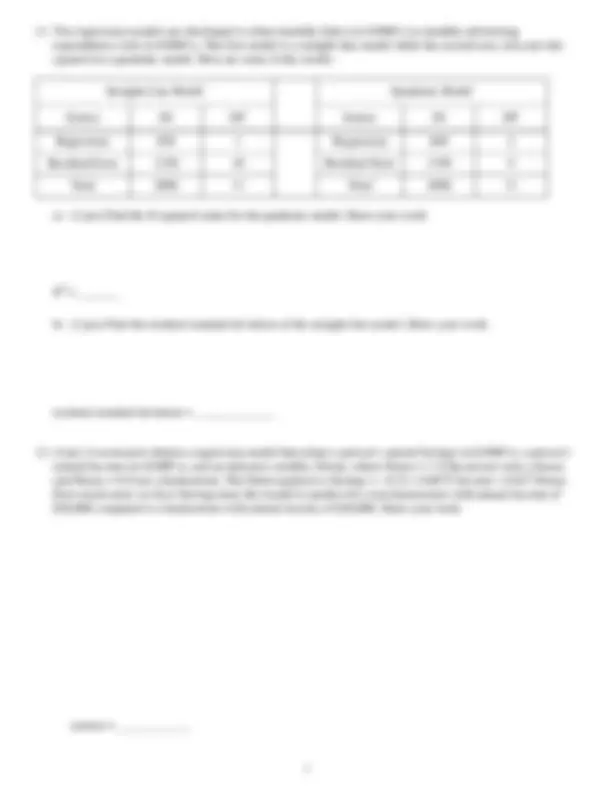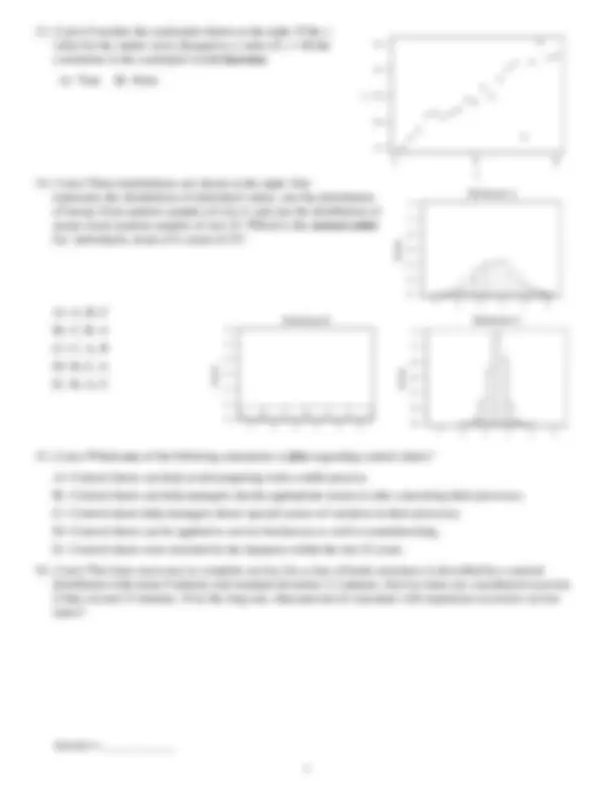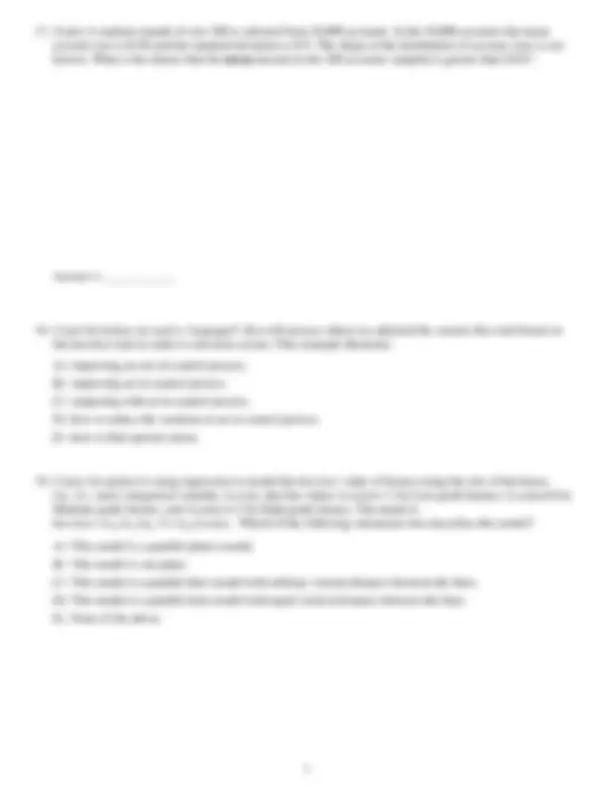





Study with the several resources on Docsity

Earn points by helping other students or get them with a premium plan


Prepare for your exams
Study with the several resources on Docsity

Earn points to download
Earn points by helping other students or get them with a premium plan
Community
Ask the community for help and clear up your study doubts
Discover the best universities in your country according to Docsity users
Free resources
Download our free guides on studying techniques, anxiety management strategies, and thesis advice from Docsity tutors
This is the Past Exam of Business Statistics which includes Residual, Diameter, Fitted Regression, Predicts, Volume, Diameter and Height, Largest Residual, Residual Standard Deviation, Model Fit etc. Key important points are: Normal Tables, Ecological Variable, Variable, Designed Experiment, Fake Treatment, Disguised, Real Treatment, Relationship, Annual Salary, Indicator Variable
Typology: Exams
1 / 6

This page cannot be seen from the preview
Don't miss anything!




Please circle one. Section: 11:30, 12:30, or 2:
Please enter all of your answers on these exam pages. There are 19 questions. The Defective Question Report Formula sheet and Normal tables will be handed out separately.
A) True B) False
y ˆ^ = b 0 + b 1 x + b 2 z
residual = __________
slope = __________
x y fitted value residual
7 510 504.9 5.
? 503 505.2?
... ... ... ...
12 504? −2.
13 512 506.7?
A) Control charts can help avoid tampering with a stable process. B) Control charts can help managers decide appropriate action to take concerning their processes. C) Control charts help managers detect special causes of variation in their processes. D) Control charts can be applied to service businesses as well as manufacturing. E) Control charts were invented by the Japanese within the last 25 years.
Answer = ____________
0 10 20
10
20
30
40
50
x
y
1 2 3 4 5 6
Density
Distribution A
1 2 3 4 5 6
Density
Distribution B
1 2 3 4 5 6
Density
Distribution C
Answer = ____________
A) This model is a parallel-planes model. B) This model is one plane. C) This model is a parallel-lines model with arbitary vertical distance between the lines. D) This model is a parallel-lines model with equal vertical distance between the lines. E) None of the above.